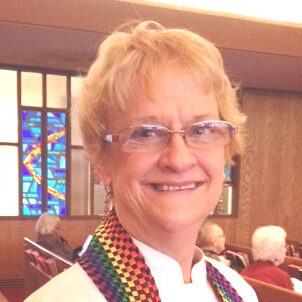Talking with Children about Stewardship
Children can both learn and teach about faithful stewardship.
All that we have belongs to God, and we get to share, manage, and use it on God’s behalf. Stewardship is caring the way God cares for the earth; our minds and bodies; our abilities, money and things; and our choices, time and relationships, all in grateful response to God’s love. We communicate this joyful message with children when we:
Tell stories with the senses. Stories help children understand God’s love and activity and describe ways in which we can respond with gifts that have first come from God. When we tell stories to children, we invite them to meet God in the story. When they act out the stories, the lessons move from their heads to their hearts. The more senses we use in relating each story, the more they remember it.
Focus on play. Play is children’s work. Carol Carter, Godly Play director, says that play becomes spiritual work whenever children act out their relationship with what is greater than themselves. God is already present in their lives, and play gives them the opportunity to incorporate learnings and express their experiences.
Connect with life events. There are stewardship elements in all aspects of living, particularly when children deal with life transitions or new situations. For example, we can reinforce stewardship learnings when children are:
* Learning to share, going to the grocery store, or caring for pets;
* Cleaning up their rooms; watching television ads, or doing a community project;
* Receiving an allowance, earning money for the first time, or getting their first bank account.
They can start early learning about tithing and sharing with people who have less than they do. In each of these situations, we can identify a stewardship lesson and then plan how best to communicate it.
Teach stewardship to match children’s growing abilities. When we are aware of children’s capacity for understanding and activity at different age levels, we can encourage them to grow as God’s stewards. For example, Delia Halverson’s book Let the Children Give lists natural stewardship learning goals for children through grade six. We can incorporate stories and experiences not only through Sunday school but also with children in worship, in groups with parents of young children, and in after-school programs.
Include children in stewardship programs. Children are not the future of the Church; they are the Church now. Include stewardship in Children’s Time. Let a child bring forward the family offering. Make giving a celebration. Teach Raising Financially Freed-Up Kids to parents. Have special offerings that engage children. Host hands-on projects. Pray for and involve the children in your church and community.
Think About It:
* At what events or occasions could you teach and learn stewardship with children?
* How do the church’s policies and practices model good stewardship of finance and Creation?
* What can the younger members of the congregation teach the church about stewardship? Have they been invited to do so?
Betsy Schwarzentraub is Director of Stewardship at the General Board of Discipleship in Nashville, TN.
Resources
Let the Children Give: Time, Talents, Love, and Money by Delia Halverson. Available at http://www.cokesbury.com
Raising Financially Freed-Up Kids by David Briggs. Available at http://www.Goodsenseministry.com
Wrapped in God’s Love: Stewardship Education for Children and Youth by the Canadian Interchurch Stewardship Committee. Available at http://www.stewardshipresources.org
God’s Gifts, My Gifts by the United Church of Christ. Order from 1-800-537-3394.
Afire With God: Becoming Spirited Stewards by Betsy Schwarzentraub. Available at http://www.cokesbury.com
Stewardship Nuggets and other resources at http://www.gbod.org/stewardship
Children’s books on Stewardship http://www.luthersem.edu/stewardship
Written 2/2011 for iTeach newsletter for United Methodist Christian educators


